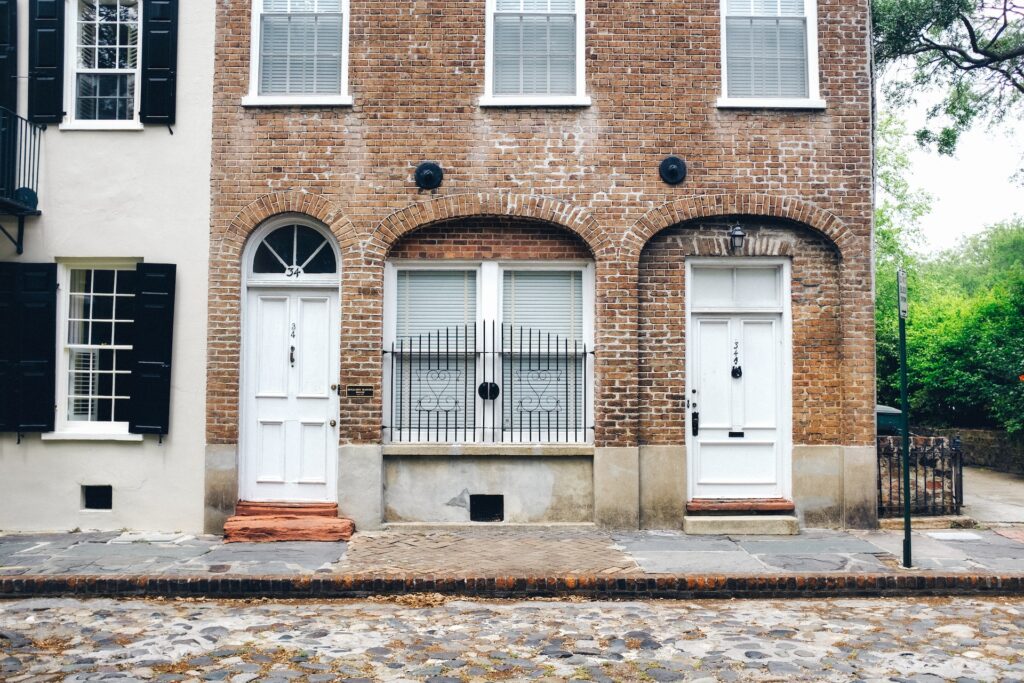Charleston, South Carolina, is a city that feels like stepping into a living museum. Known for its cobblestone streets, gas lanterns, and iconic pastel-colored homes, Charleston boasts a unique charm that reflects its rich history and cultural heritage. Central to this allure is the city’s historic architecture, much of which dates back to the 18th and 19th centuries. Preserving these historic buildings isn’t merely an aesthetic endeavor—it’s an essential effort to protect Charleston’s identity and legacy. At the heart of this mission lies masonry restoration, a critical practice that ensures these architectural gems endure the test of time.
The Historical Significance of Charleston’s Architecture
Charleston’s architectural style is a beautiful tapestry woven from various influences, including Georgian, Federal, Greek Revival, and Victorian designs. These buildings tell stories of the city’s colonial beginnings, its prominence as a port city, and its resilience through wars, earthquakes, and hurricanes. Strolling through Charleston’s historic districts, one can see grand churches, charming row houses, and stately mansions—each structure embodying a unique story of its own.
However, these architectural treasures face numerous threats. The coastal environment exposes them to saltwater intrusion and humidity, while aging materials naturally degrade over time. Without proactive preservation efforts, Charleston could lose these irreplaceable pieces of history. This is where Charleston masonry repair plays a pivotal role.
Why Masonry Restoration Matters
Masonry restoration is not simply about fixing old bricks or patching up crumbling mortar. It’s about preserving the integrity, character, and historical authenticity of a structure. Unlike modern construction, historic masonry involves traditional techniques and materials that require specialized knowledge to repair effectively. Restoring these elements ensures that the building not only looks as it did in its heyday but also retains its structural stability.
Failing to restore masonry in a timely manner can lead to significant damage, including water infiltration, cracks, and compromised foundations. Such deterioration not only diminishes the building’s appearance but also poses safety hazards. Masonry restoration prevents these issues, allowing Charleston’s iconic structures to stand tall for generations to come.
Moreover, preserving historic architecture has economic and cultural benefits. Charleston thrives on tourism, drawing visitors from across the globe eager to experience its historic charm. By investing in restoration, the city safeguards a vital part of its tourism economy while maintaining a sense of pride among residents who cherish their heritage.
Techniques Used in Historic Masonry Restoration
Restoring historic masonry requires a blend of art and science. It’s a meticulous process that begins with understanding the building’s original materials and construction methods. Restoration professionals must balance preserving the building’s authenticity with ensuring it meets modern safety standards. Here are some of the key techniques used in masonry restoration:
1. Tuckpointing
One of the most common methods in masonry restoration is tuckpointing. This involves removing deteriorated mortar from between bricks or stones and replacing it with new mortar that matches the original in color, texture, and composition. This step not only improves the appearance of the masonry but also strengthens its structural integrity.
2. Brick and Stone Replacement
When individual bricks or stones are too damaged to repair, they may need to be replaced. Restoration experts carefully source materials that match the original as closely as possible. This ensures the repaired section blends seamlessly with the existing structure.
3. Cleaning
Historic masonry often accumulates grime, algae, and pollutants over time. Cleaning these surfaces requires gentle techniques to avoid causing damage. Low-pressure washing, steam cleaning, and chemical treatments designed for historic materials are commonly used to restore the masonry’s original beauty.
4. Crack Repair
Cracks in masonry can occur due to settling, seismic activity, or weathering. Repairing these cracks involves filling them with specialized materials that bond the masonry together while allowing for slight movement to accommodate environmental changes.
5. Waterproofing
Given Charleston’s humid climate and frequent storms, waterproofing is essential to protect restored masonry. This involves applying breathable sealants that prevent water penetration while allowing trapped moisture to escape, preventing damage from within.
Challenges in Masonry Restoration
While masonry restoration is vital, it’s not without its challenges. For one, finding skilled professionals with expertise in historic materials and techniques can be difficult. Additionally, restoration projects often uncover unexpected issues, such as hidden structural weaknesses or outdated construction methods, which require careful handling to address.
Another challenge lies in maintaining historical accuracy. Modern materials and methods might seem like convenient solutions, but they can sometimes cause more harm than good, leading to further deterioration over time. This is why it’s crucial to work with experts who understand the nuances of historic masonry.
Conclusion
Charleston’s architectural heritage is more than just a collection of old buildings—it’s a living testament to the city’s history, culture, and resilience. Masonry restoration ensures that these historic structures continue to grace Charleston’s streetscapes while retaining their authenticity and charm. From meticulous tuckpointing to sensitive cleaning techniques, every effort contributes to preserving the stories embedded in the bricks and stones of this remarkable city.
By prioritizing Charleston masonry repair, the community not only safeguards its past but also invests in its future, ensuring that the city remains a beacon of Southern charm and historical significance for generations to come. Whether you’re a resident or a visitor, take a moment to appreciate the craftsmanship and dedication that goes into preserving these architectural masterpieces—it’s a legacy worth cherishing.






